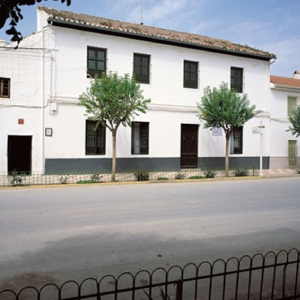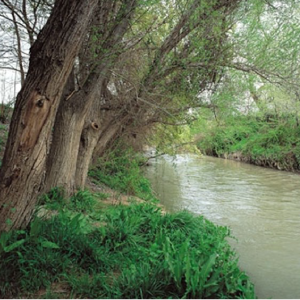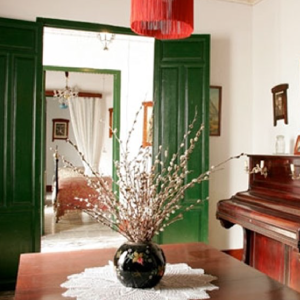Valderrubio
& House Museum FGL
Valderrubio
Federico García Lorcawas born in Fuente Vaqueros in 1898, moving soon after to Asquerosa, now called Valderrubio. The poet spent his childhood and adolescence here, between the fertile Vega of Granada and arid lands, in places like Fuente de la Carrura and la Teja, where he found his inspiration for his early poems.
The landscape to be seen in the surrounding area consists of green crops and golden poplars against the background of Sierra Nevada.

“The poet spent his childhood and adolescence here”

It is known that in these lands, Federico found inspiration for several of his most important works such as, for example, La Casa de Bernarda Alba, La Zapatera Prodigiosa and Doña Rosita la Soltera. His literature is full of characters from the town, stories taking place here, and references to the countryside and places. Moreover, according to his sister, Isabel (My memories, 2002), all his early poetry has its origin in this town. In this respect, the director of the Federico García Lorca Foundation and grandnephew of the poet, Manuel Montesinos, declares that:
“There is no doubt that García Lorca wrote a lot in the former Asquerosa and nothing in Fuente Vaqueros. There are many early poems, from 1918 and 1919, signed in Asquerosa”
Letter from the Federico García Lorca Foundation, 8 June 1990.
Apart from these references, Lorca’s life in the town is recorded in letters to his friends in which he indicates that he is in “la Vega de Zujaira”, which is the name Federico gave to this place in order to avoid the “unpleasant” sounding, Asquerosa. Further evidence of his life in the town and in the house, among other things, are the letter written to his parents in which he tells them how he wants them to prepare his room, or the parish registry in which his religious confirmation is recorded.

Casa museo Federico García Lorca
The building containing the Federico García Lorca House Museum in Valderrubio is a traditional two-storey farmhouse, built in 1915 on the foundations of the old house which Federico’s father turned into the country residence of the family between 1905 and 1909. While living in this house, Federico went to school and saw his first travelling theatre, which aroused his interest in this genre, sowing the seeds of his future creative vocation. Until 1925, it would also be the place where they spent their summers.


The actions for converting the house into a museum go back to the end of the 70’s. It was then that a renewed interest arose in reviving the memory of Federico and his family by reconstructing the places they lived in, scenes from a life overflowing with sensitivity; rooms for work, rest, leisure and, in short, for an everyday life which was always a source of inspiration. Landscapes and people from the area, customs, verbal expressions, fiestas and popular events are present in many of Federico’s works.
In parallel with the acquisition and restoration of the property, work began on the recovery of belongings and items of furniture, which in some cases had been kept by the neighbours in charge of taking care of the house and working the lands of the family.





